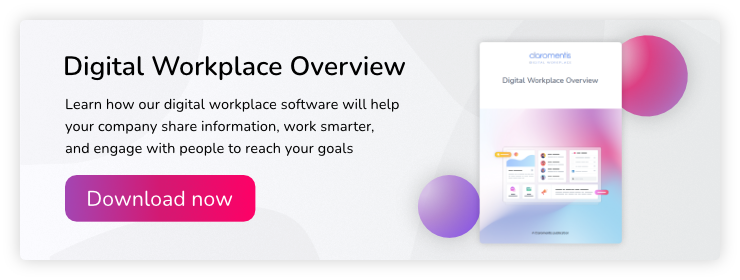When it comes to navigating a successful digital workplace transformation, the vision and knowledge of the organisation’s senior leaders is paramount to driving the changes forward. There are a number of key skills that every digital leader should know in order to make the digital transformation as smooth as possible.
Embracing a new digital workplace is crucial – both for employees and for customers – because it improves efficiency, productivity, and employee engagement, which ultimately leads to an increase in revenue. In fact, a lack of capability and knowledge among an organisation’s senior leaders can actually hamper efforts to bring the workplace into the 21st century.
Here are four important skills that all business leaders should have when implementing significant digital change:
1) Understand the value of the digital workplace
Studies have found that 56% of CEOs say their revenue has increased as a result of digital improvements.
And yet, of those who recognise the importance of enhancing the employee experience – such as using intranet software effectively, for example – it’s been found that some senior managers don’t fully understand the new roles and behaviour that they must adopt to drive digital value in their company.
Without the people at the top understanding the vision, implementing a digital workplace and realising its true benefits will fail. Digital leadership is a skill in itself and many c-suite executives tasked with the role don’t have the necessary skills and experience to spearhead a digital programme. Don’t let this be you!
2) Make data driven decisions
The essential skills that digital leaders must possess start with a basic knowledge that data driven decisions are where the power lies. Tracking user behaviour and search practices are essential for the decision-making process, for example, when choosing the intranet tools that will be most useful to your teams.
Anecdotal theories, such as someone saying they used a particular system at their previous workplace and it “seemed to work okay”, aren’t precise enough. You need to understand why a digital workplace platform is effective, and concrete data will reveal the answers.
It’s also important to recognise that the digital landscape for employees, customers, and external stakeholders is constantly shifting. If you’re investing a lot of money in major strategic improvements for your organisation, it’s essential that you do your research and understand if your digital transformation will remain relevant in the future of work.
3) Prioritise the user experience
Fundamental in any digital improvement programme is a user-centric mentality. It’s no use switching to a digital workplace if it’s not engaging or easy-to-use.
Business leaders who are driving digital change must prioritise the employee experience, and this can be achieved by simply understanding what your teams need from a digital workplace.
For instance, if you have staff who are working remotely, providing a cloud based digital workplace that’s easily accessible – rather than one that’s tied down to your organisation’s internal IT servers – would be a good place to start.
Similarly, if your teams are looking to improve productivity, look for digital workplace tools that include automation features such as e-forms and workflows, and digital workplace learning software that encourages in-house upskilling. This will help reduce busywork by streamlining business processes and improving internal knowledge, in turn boost productivity levels.
4) Debunk any digital workplace myths
It’s also important to realise that digital transformation centres on process simplification, rather than on grand visions.
Business leaders need to debunk the myths and understand that the digital workplace isn’t some mysterious place that other people in IT will handle. It’s about everyone working from the same page and aspiring to adopt efficient working practices that will make everyone’s role simpler and yet more effective.
Digital leaders also need to understand that integration is of vital importance in the digital world of work. While technology is amazing and has endless capabilities, the main problem faced by a lot of companies is the lack of integration between tools. Many tools live in their own separate “digital universes”. Employees and suppliers need a fluid, smooth flow between one digital service and another. Don’t be dazzled by new technology and instead, keep focused on the tools that will enhance integration.






